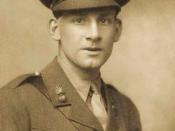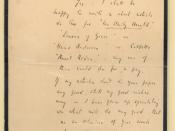Siegfried Sassoon, the poet of "Suicide in the Trenches" fought in the 1st World War, and won the Military Cross for 'gallantry in action'. However in July 1917 he was sent to Craiglockhart War Hospital near Edinburgh where he met Wilfred Owen, another famous war poet. He had become destroyed by the trauma of the 1st World War, and disheartened by the generals leading it. His anti-war stance was confirmed on July 30, when his statement demanding an end to the war was read out in the House of Commons and then reported upon in The Times the next day. Unlike Wilfred Owen, Siegfried Sassoon survived the war and retired from the army shortly after the war. His book of War Poems were published in 1919 and it is evident that even shortly into the war he was deeply opposed to its existence, but by the end his work was nothing short of horrifying and deeply bitter such as "To The Warmongers".
In "Siegfried Sassoon" (a biography by John Stuart Roberts), it is highlighted that he grew to be infuriated and incensed by the British public's lack of knowledge of conditions in the trench. He spent most of the war years fighting in the trenches and as we now know, the trenches were nothing short of horrific, down to diseases, the awful conditions they were forced to live in and the lack of nourishment. Also, despite being young himself he was distressed when a young friend of his, to be young to have been sent to war, was shot for deserting and then disowned. It is believed that this poem was about him, although Sassoon never made any direct reference to him himself.
In the first stanza we see very simple, unassuming language used as he describes the...


